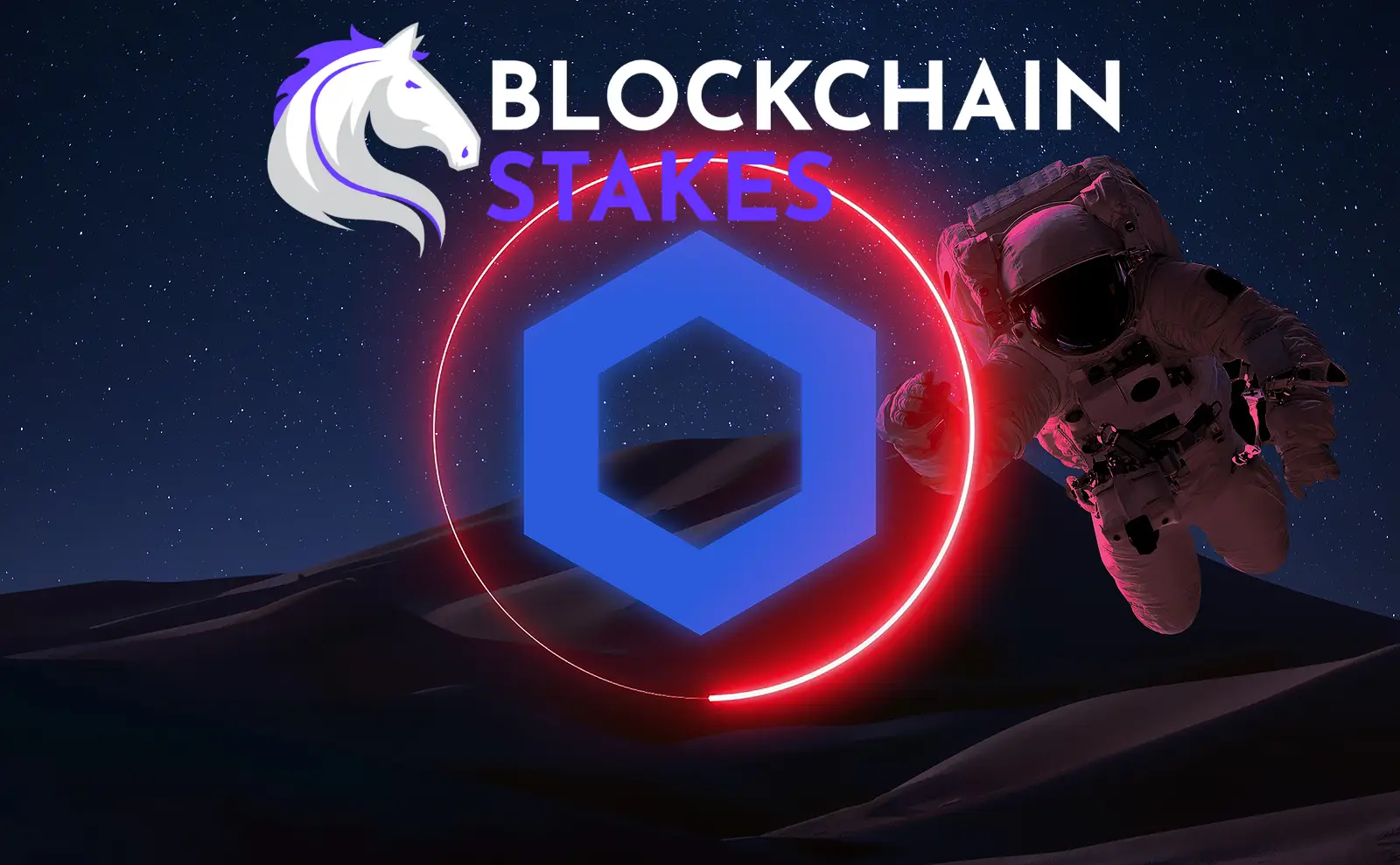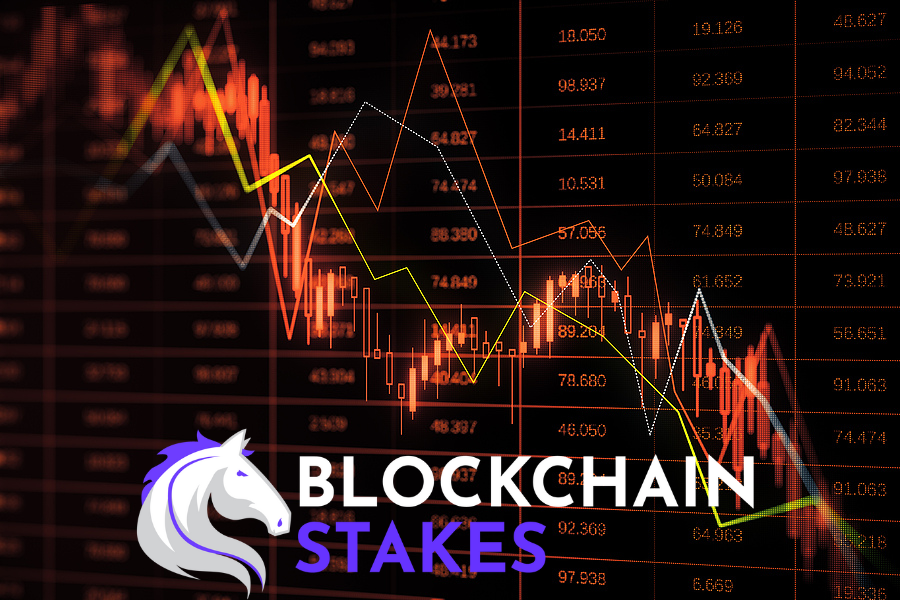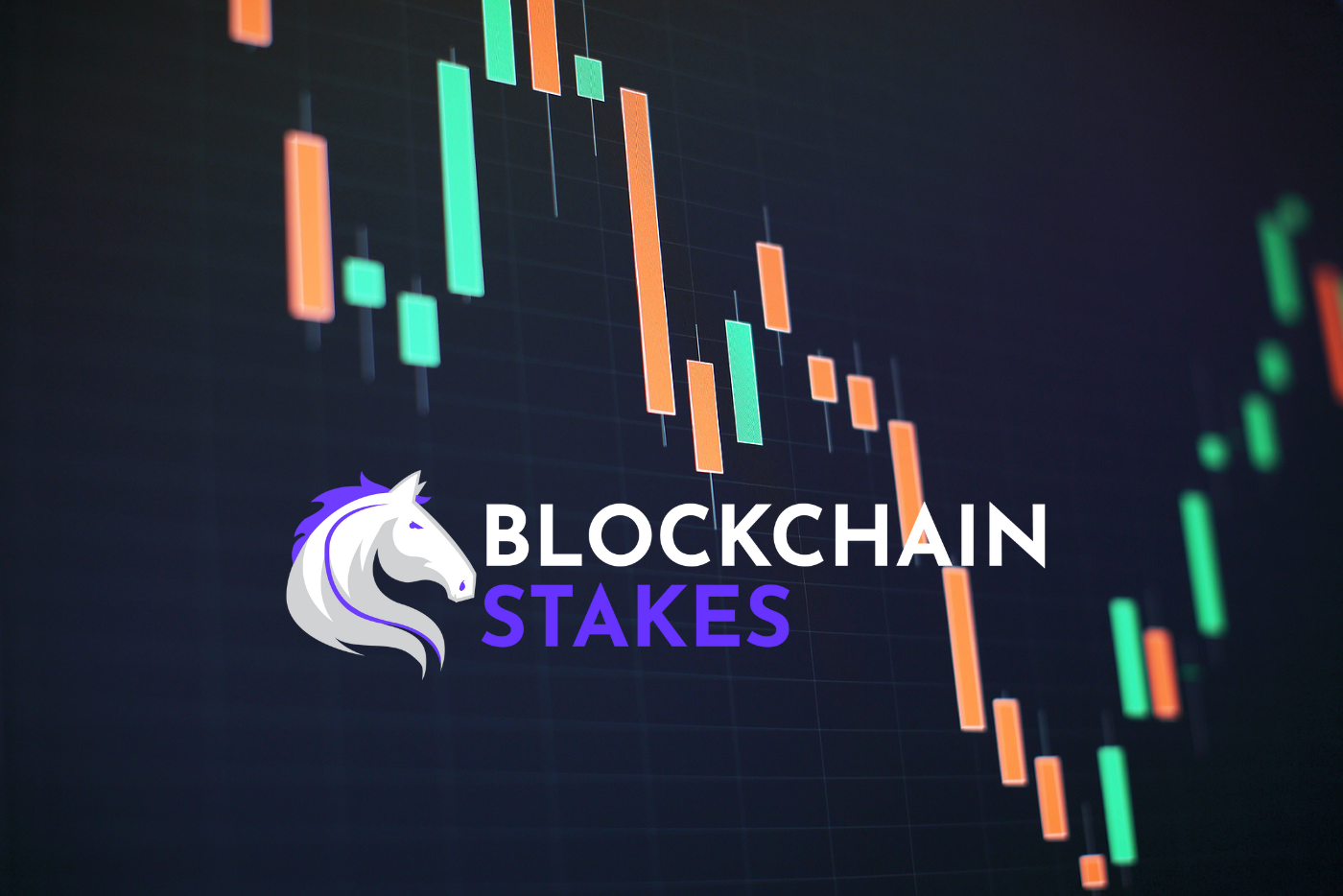Introduction
In the realm of blockchain technology, one name stands out for its pivotal role in bridging the gap between on-chain and off-chain worlds: Chainlink. At the heart of this revolutionary platform lies the LINK token, powering a decentralized oracle network that facilitates the secure and reliable exchange of data for smart contracts. In this article, we delve into the inner workings of Chainlink, unraveling how LINK empowers secure and reliable data feeds within the blockchain ecosystem.
Chainlink’s journey began with a fundamental challenge: the “oracle problem.” Smart contracts, while powerful in their ability to execute code autonomously, are inherently isolated from external data sources. This limitation hindered their potential applications, restricting them to interactions within the confines of the blockchain. Recognizing this obstacle, Sergey Nazarov and Steve Ellis conceptualized Chainlink in 2017 as a solution to enable smart contracts to securely access real-world data, events, and payments.
Chainlink operates as a decentralized oracle network, seamlessly connecting blockchains with off-chain data sources. This connectivity unlocks a myriad of possibilities, empowering smart contracts to interact with real-world data in a trustless and secure manner. Crucially, the LINK token serves as the lifeblood of this ecosystem, incentivizing network operators to retrieve and validate off-chain data while ensuring the integrity and reliability of the information exchanged.
As we attempt to understand the inner workings of Chainlink and the pivotal role played by the LINK token, we invite you to explore the fascinating intersection of blockchain technology and real-world data integration. Join us as we decipher the intricate mechanisms driving Chainlink’s mission to revolutionize decentralized finance (DeFi), supply chain management, gaming, insurance, and beyond.
Understanding Chainlink
In the realm of blockchain technology Chainlink emerges as a pioneering force reshaping the landscape of decentralized applications (dApps). Chainlink serves as a decentralized oracle network, facilitating the seamless exchange of data between blockchain platforms and external sources. Here, we delve deeper into the mechanics of Chainlink and the pivotal role played by the LINK token within its ecosystem.
Decentralized Oracle Network: The cornerstone of Chainlink’s functionality lies in its decentralized oracle network. Traditionally, smart contracts, while self-executing and immutable, face limitations in accessing real-world data. Chainlink addresses this challenge by serving as a bridge between blockchains and external data sources, enabling smart contracts to securely interact with real-world information. Through a network of decentralized nodes, Chainlink ensures the integrity and reliability of the data fed into smart contracts, safeguarding against manipulation or tampering.
The LINK Token: At the heart of the Chainlink ecosystem beats the LINK token, a digital asset imbued with multifaceted utility. As the native cryptocurrency of the Chainlink network, LINK serves as the primary means of incentivizing and rewarding network participants. Node operators, tasked with retrieving and validating off-chain data, are compensated in LINK tokens for their services, ensuring a robust and decentralized network of oracle providers. Additionally, smart contract developers leverage LINK tokens to access Chainlink’s oracle services, paying for the retrieval and processing of external data.
Origins and Vision: Chainlink’s inception in 2017 stemmed from a visionary pursuit to address the inherent limitations of smart contracts—the “oracle problem.” Co-founders Sergey Nazarov and Steve Ellis envisioned a future where smart contracts could seamlessly integrate real-world data, unlocking a vast array of use cases across industries. Thus, Chainlink emerged as a testament to their vision, pioneering the adoption of decentralized oracles and revolutionizing the way blockchain applications interact with external environments.
As we navigate the intricate architecture of Chainlink and unravel the symbiotic relationship between its decentralized oracle network and the LINK token, we gain deeper insights into the transformative potential of blockchain technology. In the next section, we explore how Chainlink distinguishes itself from traditional cryptocurrencies and its pivotal role in expanding the capabilities of the blockchain ecosystem.
How Chainlink Differs from Other Cryptocurrencies
In the landscape of cryptocurrencies, each project holds its unique value proposition and serves distinct purposes within the digital economy. Chainlink, while operating within the realm of blockchain technology, stands apart from traditional cryptocurrencies in several fundamental aspects. Here, we delineate the key differentiators that set Chainlink apart and underscore its significance in the broader ecosystem.
Purpose-driven Functionality: Unlike conventional cryptocurrencies like Bitcoin, which primarily serve as digital alternatives to fiat currency, Chainlink is purpose-built to address a specific challenge: the integration of real-world data into blockchain-based applications. While Bitcoin and other cryptocurrencies focus on facilitating peer-to-peer transactions and store of value, Chainlink’s mission extends beyond financial transactions to enable smart contracts to securely access and utilize external data sources.
Technological Infrastructure: Chainlink’s underlying technology diverges from traditional cryptocurrencies, emphasizing the integration of blockchain networks with external data sources. Smart contracts, the cornerstone of blockchain functionality, are executed autonomously based on predefined conditions. Chainlink augments this functionality by enabling smart contracts to interact with real-world events and data through its decentralized oracle network, thereby expanding the scope and applicability of blockchain technology.
Tokenomics and Utility: The utility of Chainlink’s native token, LINK, differs markedly from traditional cryptocurrencies. While cryptocurrencies like Bitcoin primarily serve as mediums of exchange or store of value, LINK plays a multifaceted role within the Chainlink ecosystem. As the fuel that powers Chainlink’s decentralized oracle network, LINK tokens are used to incentivize node operators for retrieving and validating off-chain data, as well as to facilitate transactions between smart contracts and oracle providers.
Limited Token Supply: Similar to Bitcoin’s finite supply of 21 million coins, Chainlink adheres to a predetermined token supply model. With a maximum supply cap of one billion LINK tokens, Chainlink ensures scarcity and deflationary pressure, enhancing the token’s value proposition and incentivizing long-term holding. This finite token supply contributes to the economic dynamics of the Chainlink ecosystem, fostering sustainability and stability over time.
Partnerships and Integrations: Chainlink’s approach to collaboration and integration sets it apart from traditional cryptocurrencies, which often operate independently of external ecosystems. Chainlink has forged strategic partnerships with a myriad of blockchain projects, DeFi platforms, enterprises, and industry stakeholders to expand the reach and adoption of its decentralized oracle network. These partnerships underscore Chainlink’s commitment to interoperability and its vision of bridging the gap between blockchain technology and real-world applications.
While Chainlink shares some foundational principles with traditional cryptocurrencies, such as decentralized governance and cryptographic security, its unique focus on decentralized oracle services and real-world data integration sets it apart as a trailblazer in the blockchain landscape. As we go deeper into Chainlink’s ecosystem and the role of the LINK token, we gain a holistic understanding of its transformative potential and its pivotal role in driving innovation across industries.
Real-World Applications of Chainlink
Beyond the realm of theoretical concepts and technological frameworks, the true measure of a blockchain platform’s success lies in its real-world applications and impact on various industries. Chainlink, with its decentralized oracle network and versatile architecture, has emerged as a catalyst for innovation across a spectrum of use cases. Here, we explore some of the tangible applications of Chainlink’s technology and its transformative potential in diverse domains.
- Supply Chain Management: Chainlink’s decentralized oracle network serves as a linchpin in supply chain management, enabling transparent, auditable, and secure tracking of physical assets across global supply chains. By integrating real-time data feeds from IoT sensors, GPS trackers, and other external sources, Chainlink empowers smart contracts to autonomously verify the provenance, authenticity, and condition of goods throughout their journey. This level of transparency enhances trust among stakeholders, mitigates counterfeiting risks, and streamlines logistics operations.
- Insurance: In the insurance industry, where risk assessment and claims processing hinge on accurate and timely data, Chainlink’s oracle services play a pivotal role in automating and optimizing workflows. By integrating external data sources such as weather forecasts, market indices, and IoT devices, Chainlink enables smart contracts to trigger insurance payouts based on predefined conditions. This automation not only expedites claims processing but also reduces administrative overhead and minimizes the potential for fraud, fostering a more efficient and equitable insurance ecosystem.
- Gaming: In the realm of gaming and digital collectibles, Chainlink’s decentralized oracle network unlocks a myriad of possibilities for dynamic and interactive experiences. By integrating real-world data feeds into gaming environments, developers can create immersive gameplay mechanics, such as dynamically adjusting in-game assets based on real-time events or external conditions. Moreover, Chainlink’s verifiable randomness functionality ensures fairness and integrity in gaming outcomes, enhancing player trust and engagement in decentralized gaming platforms.
- Identity and Credentials: Chainlink’s oracle services extend beyond financial transactions to encompass identity verification and credential management. By integrating external data sources such as government databases, academic records, and biometric authentication systems, Chainlink enables smart contracts to validate and authenticate individuals’ identities in a decentralized and tamper-proof manner. This capability has far-reaching implications for identity management, enabling secure access to digital services, streamlined onboarding processes, and enhanced data privacy.
- Sports and Fantasy Sports: In the realm of sports and fantasy sports, Chainlink’s decentralized oracle network facilitates the integration of real-world sports data into blockchain-based applications. By aggregating and verifying sports performance data from reputable sources, Chainlink enables the creation of dynamic NFTs representing athletes, digital trading cards, and fantasy sports competitions. This convergence of blockchain technology and sports entertainment fosters new avenues for fan engagement, digital collectibles, and decentralized sports betting platforms.
Chainlink’s real-world applications transcend the boundaries of traditional finance and extend into domains as diverse as supply chain management, insurance, gaming, identity management, and sports entertainment. By harnessing the power of decentralized oracle networks and integrating real-world data into blockchain-based applications, Chainlink is paving the way for a more transparent, efficient, and inclusive digital economy. As we continue to explore the transformative potential of Chainlink’s technology, we gain a deeper appreciation for its role in shaping the future of decentralized applications and unlocking new possibilities for innovation and collaboration across industries.
Chainlink’s Partnerships and Integration
In the ever-expanding landscape of blockchain technology, collaboration and integration play a pivotal role in driving innovation and fostering adoption. Chainlink, with its decentralized oracle network and versatile architecture, has established strategic partnerships with numerous high-profile projects across various industries. These partnerships not only highlight Chainlink’s commitment to interoperability but also underscore its role as a catalyst for innovation and transformation. Here, we delve into some notable examples of Chainlink’s partnerships and integrations across diverse domains.
- Decentralized Finance (DeFi): In the realm of decentralized finance (DeFi), Chainlink has emerged as a foundational infrastructure provider, enabling secure and reliable access to external data for a myriad of DeFi protocols and applications. Partnerships with leading DeFi platforms such as Nexo, Crypto.com, and AAVE have facilitated the integration of Chainlink’s oracle services, ensuring the accuracy and integrity of on-chain data feeds. Moreover, Chainlink’s verifiable randomness function (VRF) has been adopted by projects like PoolTogether, enhancing the fairness and transparency of decentralized savings games.
- Insurance: Chainlink’s oracle services have found extensive applications in the insurance industry, where the accuracy and timeliness of data are paramount. Partnerships with insurance providers such as Arbol and Etherisc have enabled the integration of external data feeds into insurance smart contracts, automating claims processing and enhancing risk assessment. Moreover, Chainlink’s weather data feeds have been instrumental in facilitating crop insurance solutions in regions prone to agricultural risks, such as the United States, Cambodia, and Africa.
- Blockchain Platforms: Chainlink’s interoperability extends beyond the Ethereum ecosystem to other blockchain platforms seeking to leverage decentralized oracle services. Partnerships with blockchain platforms like Tezos and Polkadot have facilitated the integration of Chainlink’s oracle network, expanding the reach and capabilities of these platforms. Additionally, projects such as Bodhi and Celer have incorporated Chainlink’s oracle services to enhance the functionality and security of their respective platforms, paving the way for cross-chain interoperability and seamless data integration.
- Sports and Fantasy Sports: The convergence of blockchain technology and sports entertainment has led to exciting partnerships leveraging Chainlink’s oracle network. Data Sports Group, a sports data aggregator, relies on Chainlink’s decentralized oracle network to source and verify sports performance data from thousands of sources, ensuring the integrity and accuracy of data feeds. Moreover, Chainlink’s integration into fantasy sports platforms enables dynamic NFTs representing athletes and facilitates transparent and fair competitions based on real-world data.
- Real-World Assets: Chainlink’s applications extend beyond the realm of digital assets to encompass real-world assets and supply chain management. By integrating Chainlink’s oracle services, companies can track physical assets in supply chains, enhance transparency, and mitigate counterfeiting risks. Moreover, Chainlink enables the seamless integration of payment systems, provenance blockchains, and existing backend systems for global trade processes, revolutionizing the way businesses manage and track their assets.
Chainlink’s partnerships and integrations underscore its pivotal role as a foundational infrastructure provider in the blockchain ecosystem. By collaborating with leading projects across diverse industries, Chainlink has positioned itself as a catalyst for innovation and transformation, enabling the seamless integration of blockchain technology with real-world applications. As we continue to witness the proliferation of decentralized applications and the evolution of the blockchain landscape, the significance of Chainlink’s partnerships and integrations becomes increasingly apparent, underscoring its potential to drive widespread adoption and usher in a new era of decentralized innovation.
Key Takeaway
From its inception, Chainlink has been guided by a bold vision: to address the “oracle problem” and unlock the full potential of smart contracts by enabling seamless access to external data sources. This vision has not only reshaped the landscape of decentralized finance (DeFi), supply chain management, insurance, gaming, and sports entertainment but has also laid the foundation for a more transparent, efficient, and inclusive digital economy.
The LINK token, serving as the lifeblood of the Chainlink ecosystem, has emerged as a cornerstone of decentralization, incentivization, and governance. By empowering node operators, facilitating transactions, maintaining decentralization, enabling staking, and potentially governing the network, the LINK token embodies the principles of utility, security, and community-driven innovation at the heart of the Chainlink project.
Furthermore, Chainlink’s strategic partnerships and integrations across diverse industries underscore its role as a catalyst for innovation and collaboration. By collaborating with leading projects and platforms, Chainlink has positioned itself as a foundational infrastructure provider, enabling the seamless integration of blockchain technology with real-world applications and use cases.
As we reflect on the journey thus far, it becomes evident that Chainlink’s impact extends far beyond the realm of theoretical concepts and technological frameworks. It represents a paradigm shift—a new era of decentralized innovation that transcends boundaries and empowers individuals and organizations to reimagine the future of finance, commerce, and beyond.




















